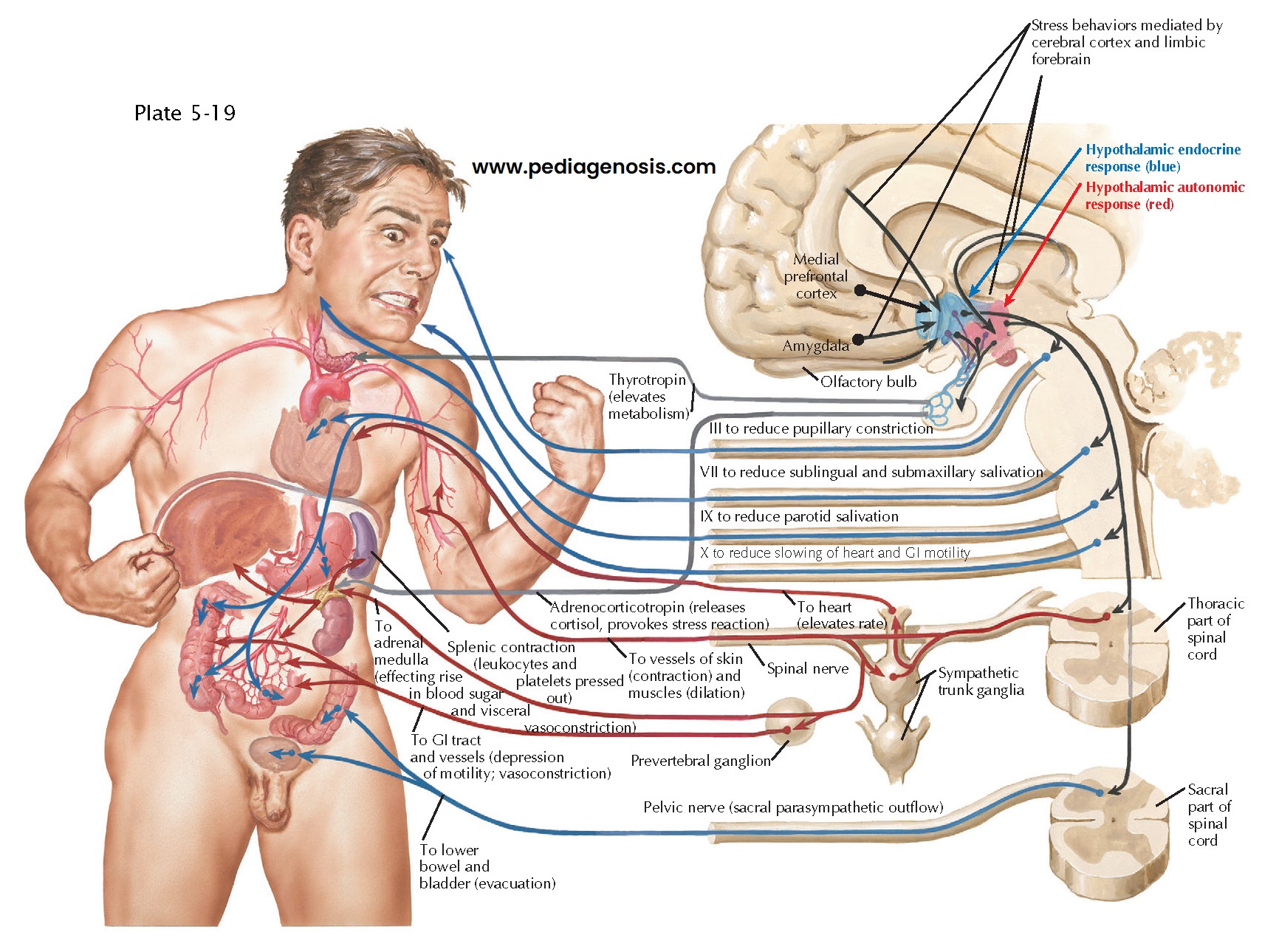Stress Response
 |
| AUTONOMIC, ENDOCRINE, AND BEHAVIORAL COMPONENTS OF STRESS RESPONSES |
Stress was defined by the Nobel laureate Hans Selye as whatever increased the blood levels of corticosteroids. He was aware that the stimuli for elevated cortisol could include a very wide range of behavioral and physiologic stressors. However, as shown in Plate 5-19, stress involves much more than just corticosteroid secretion, including other endocrine as well as autonomic and behavioral components.
Behavioral
stress may come from many different sources, but the areas that most frequently
show increased activity under stressful conditions include the medial
prefrontal cortex (particularly the cingulate gyrus) and parts of the amygdala
(particularly the central nucleus). These regions also have direct inputs to
the hypothalamus. The paraventricular nucleus of the hypothalamus is
particularly important in producing stress responses. It contains separate
populations of neurons that regulate anterior and posterior pituitary
responses, as well as autonomic outputs. Most of the corticotropin-releasing
hormone (CRH) neurons that regulate secretion of adrenocorticotropic hormone
(ACTH) are found in the medial part of the paraventricular nucleus. These
neurons are activated by virtually all stressful stimuli, and they secrete CRH
and thus drive the systemic secretion of cortisol. The lateral part of the
paraventricular nucleus contains neurons that release vasopressin through the
posterior pituitary gland. This response permits fluid conservation in case
there is hemorrhage (e.g., associated with fighting). The dorsal and anterior
parts of the paraventricular nucleus contain nerve cells that innervate the
sympathetic and parasympathetic preganglionic neurons in the medulla and the
spinal cord. These inputs reduce fluid loss through salivation (dry mouth),
ready the cardiovascular system for fight or flight (elevated heart rate and
blood pressure), and direct blood flow to muscular vascular beds to prepare for
action.
However, it is probably the behavioral responses to stress that are most familiar and distressing to most individuals. The most prominent symptom of stress is hyperarousal, in which the individual reacts excessively to daily stimuli. This can include a tendency to become angry or aggressive more easily. At night, individuals who are under stress often have difficulty sleeping. Positron emission tomography (PET) studies on patients with insomnia show activation of the same brain regions (medial prefrontal cortex, amygdala, hypothalamus) that are activated in animals under experimental stress.




